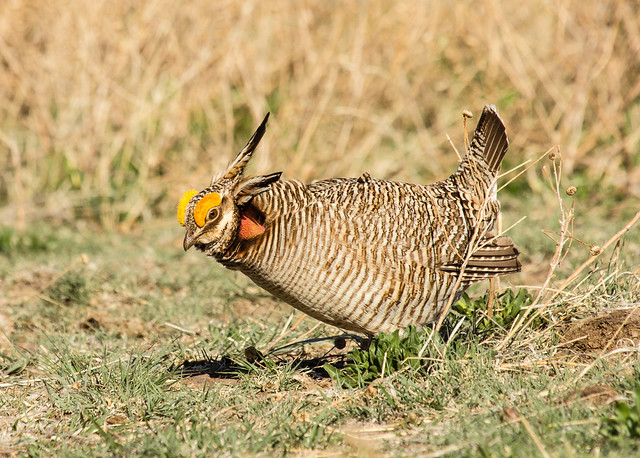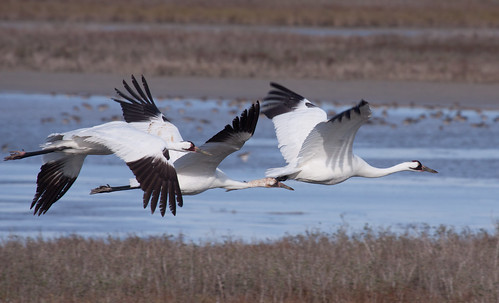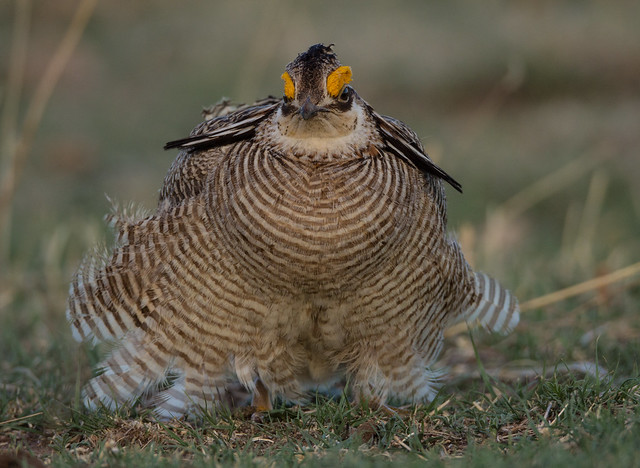
May 16, 2014, was Endangered Species Day. The predecessor of the Endangered Species Act was the Endangered Species Preservation Act of 1966, which permitted the listing of native U.S animal species as endangered and authorized the Secretary of the Interior to list endangered domestic fish and wildlife and allowed the United States Fish and Wildlife Service to spend up to $15 million per year to buy habitats for listed species. It also directed federal land agencies to preserve habitat on their lands. The Act also consolidated and even expanded authority for the Secretary of the Interior to manage and administer the National Wildlife Refuge System. Other public agencies were encouraged, but not required, to protect species. The act did not address the commerce in endangered species and parts.

In March, 1967 the first list of endangered species was issued under the act. It included 14 mammals, 36 birds, 6 reptiles and amphibians and 22 fish. It included only vertebrates because the Department of Interior's definition of "fish and wildlife" was limited to vertebrates. However, with time, researchers noticed that the animals on the endangered species list still were not getting enough protection, thus further threatening their extinction.
The Endangered Species Act of 1969 expanded protections, but when he was running for president, Richard Nixon said these conservation efforts were inadequate. When elected, he called on Congress to pass comprehensive endangered species legislation. That was back when presidents of both parties tended to assign people who actually understood the roots of problems rather than political hacks to write legislation. And that is how the Endangered Species Act of 1973, signed by Nixon on December 28, 1973, came to be. It was passed by a voice vote in the Senate and by the House of Representatives by a vote of 355–4. Dr. Russell Train led a team of eminently qualified lawyers and scientists in crafting a document that completely changed the direction of environmental conservation in the United States, focusing on ecosystem protection as the fundamental underpinnings of the decline of endangered species. In 1978 in the case of the Tennessee Valley Authority v. Hill, the U.S. Supreme Court found that "the plain intent of Congress in enacting" the ESA "was to halt and reverse the trend toward species extinction, whatever the cost."

Most people seem to believe that now that the Endangered Species Act has been in existence for over 40 years, wildlife is well protected, but even before the Act was passed in 1973, commercial interests were trying to gut it. They quickly politicized protections of species many people were unfamiliar with, from the tiny snail darter fish to the Spotted Owl, and a huge concerted effort by powerful interest groups managed to get large sectors of the public questioning the value of the law, making it much easier by 1982 to pass an amendment allowing developers to damage habitat of even critically endangered species with few repercussions. Meanwhile, it became harder and harder to get species listed that hadn’t already been listed back in the 60s before legal protections were strengthened by the Endangered Species Act. Indeed, a few species that have declined by over 90 percent since the 60s, including both species of sage grouse and both species of prairie chickens, are still not listed as endangered. This week, Bob Dole of Kansas derided the US Fish and Wildlife decision to list the Lesser Prairie-Chicken as threatened under the act. It’s been clear and obvious to birders, ornithologists, and game managers that the species is on a clear path toward extinction right now, and except for the political pressure by the energy industry and developers in Kansas, Oklahoma, Colorado, New Mexico, and Texas, the species would be getting the legal protections it deserves. Tragically, Americans are less aware of the plight of disappearing species in our own country than they are of the plight of polar bears and pandas, so there no longer is the political will to protect our wildlife that there was in the 1970s, and opponents of species protection are both richer and more politically powerful. The way things are going, it’ll be a miracle if the act survives the next 40 years. And the future is even more in doubt for the Lesser Prairie-Chicken.
